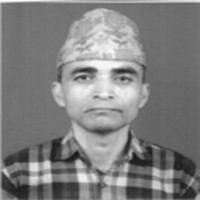Promoting Tourism Through Rafting
Khilendra Basnyat
In recent times, tourism has been gaining popularity in both developing and developed countries rapidly chiefly because of the fast development in transport and communication facilities. Nowadays, it is turning into the strongest service industry in the world with its resilient power to overcome adverse impacts to satisfy the increasing human quest for travel.
A few decades ago, tourism was limited to a handful of countries where there were more infrastructures and development. But today most countries around the world are seeking to reap more benefits from this industry in order to accomplish their resource gap. Being closely interlinked with infrastructures and tranquility, politically stable countries have been gaining more benefits every year from this industry.
In fact, tourists visit different countries in accordance with their interest, despite the fact that East Asia and Europe are the main points for the distribution of tourists around the world. No matter where they originate from, almost all tourists have their first step either in Europe or East Asia. For this reason, the Republic of Korea, Japan and Singapore have a very high tourist potential at any given time and it would be to Nepal's interest if they can be induced to come here also in the future.
Capital flows
Tourism expedites capital flows to a country and helps increase its Gross Domestic Product (GDP). As a result, there is an increase in per-capita income which can be utilised in other development sectors. This can be testified by the fact that the so-called developed countries have reached the climax of progress and prosperity by utilising the income derived from this industry. In most countries, tourism is an important economic activity, which helps to expedite various development activities in a country. Apart from its direct economic impact, there are significant indirect and induced impacts which can be gradually realised.
Comprising an amalgamation of economic and psychological variables, tourism is a unique and multi-disciplinary subject. This fact has been gradually realised by economists of many countries of the world, and Nepal is not an exception in this regard. Actually, there are some variables beyond our imagination which affect the flow of tourists in a country. This is why strenuous endeavours should be made to identify such variables to bring about substantial economic development in a country.
If we study the history of Nepal, tourism has been flourishing here for the past few decades, contributing about 5 per cent to its GDP. However, it has not been able to gain as much benefits as expected due to the lack of initiatives from the concerned authorities and appropriate planning. In reality, by providing more outdoor recreations even few tourists can contribute more to Nepal's GDP. White water rafting (WWR), which was initiated by Sir Edmund Hillary in Nepal in 1968 in Sunkoshi River, holds a huge potential in Nepal.
In recent years, WWR has become popular among many tourists coming from different parts of the world. Consequently, several rafting agents have been established here for rendering services to the tourists coming from both the home and abroad. In Nepal, there are many rivers where WWR can be conducted throughout the year. Despite this, till now, WWR is conducted only ten months a year with the main purpose of preventing untoward incidents.
So far, the main rivers permitted by Nepal government for WWR are Arun, Bheri, Bhotekoshi, Karnali, Marsyangdi, Seti, Sunkoshi and Trishuli. There are also strong possibilities of WWR in rivers such as Budigandaki, Dudh Koshi and Rapti; however, both the government and non-government sectors have not paid proper heed to utilise them for WWR. Till now, the government has not shown keen interest in promoting WWR nor has it explored any possibility for it in more rivers. Actually, if there is a wide publicity about WWR in the above-mentioned rivers, it is definite that there will be a quantum jump in the number of tourists coming to Nepal every year. Consequently, more income can be obtained.
Indigenous entrepreneurs
In the past, some foreign entrepreneurs earned a lot of money involving in WWR in Nepal. In this regard, Nepal Association of Rafting Agency (NARA) raised voice against it with a view to encourage indigenous entrepreneurs engaged in WWR. Time and again, it demands concrete actions for the promotion of WWR here but the concerned authorities do not pay attention to this fact seriously.
Nepal has a bright prospect for WWR business. This is why both the government and private sector should work in concert to promote this business in the future. Actually, the concerned authorities should comprehend well the fact that the promotion of this business helps foster tourism here, thereby helping increase GDP in the future. Since the present government is committed to bringing in two million tourists within two years, WWR, if developed well, can help to accomplish this objective.
(Basnyat is a freelance writer)
Recent News

Do not make expressions casting dout on election: EC
14 Apr, 2022
CM Bhatta says may New Year 2079 BS inspire positive thinking
14 Apr, 2022
Three new cases, 44 recoveries in 24 hours
14 Apr, 2022
689 climbers of 84 teams so far acquire permits for climbing various peaks this spring season
14 Apr, 2022
How the rising cost of living crisis is impacting Nepal
14 Apr, 2022
US military confirms an interstellar meteor collided with Earth
14 Apr, 2022
Valneva Covid vaccine approved for use in UK
14 Apr, 2022
Chair Prachanda highlights need of unity among Maoist, Communist forces
14 Apr, 2022
Ranbir Kapoor and Alia Bhatt: Bollywood toasts star couple on wedding
14 Apr, 2022
President Bhandari confers decorations (Photo Feature)
14 Apr, 2022











